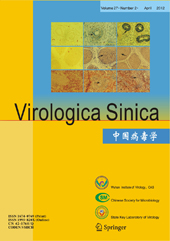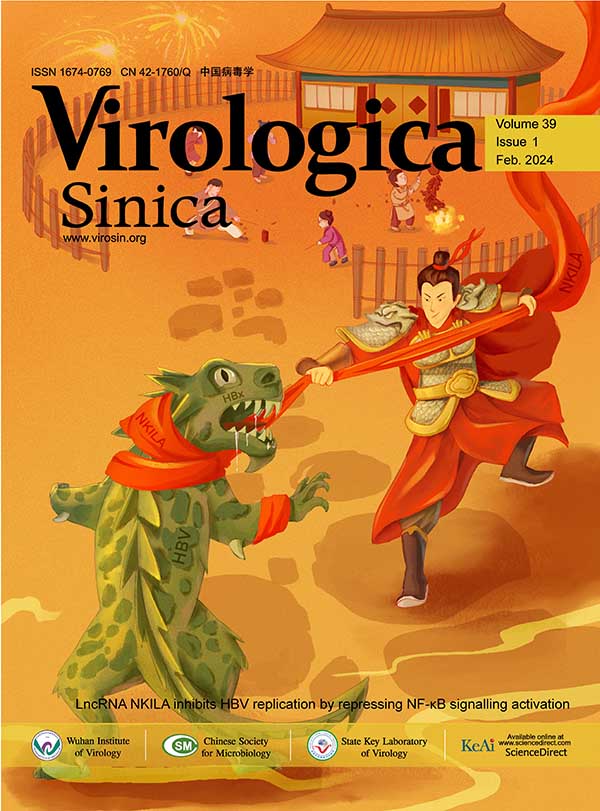Genetic Modification of Baculovirus Expression Vectors
2012, 27(2): 71 doi: 10.1007/s12250-012-3236-y
Received: 24 November 2011
Accepted: 27 February 2012
As a protein expression vector, the baculovirus demonstrates many advantages over other vectors. With the development of biotechnology, baculoviral vectors have been genetically modified to facilitate high level expression of heterologous proteins in both insect and mammalian cells. These modifications include utilization of different promoters and signal peptides, deletion or replacement of viral genes for increasing protein secretion, integration of polycistronic expression cassette for producing protein complexes, and baculovirus pseudotyping, promoter accommodation or surface display for enhancing mammalian cell targeting gene delivery. This review summarizes the development and the current state of art of the baculovirus expression system. Further development of baculovirus expression systems will make them even more feasible and accessible for advanced applications.
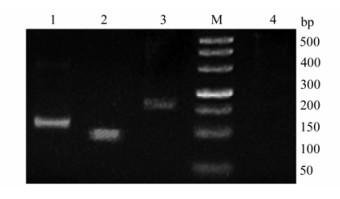
Expression of Endogenous Beta Retroviruses and Hyal-2 mRNA in Immune Organs of Fetuses and Lambs
2012, 27(2): 83 doi: 10.1007/s12250-012-3222-4
Received: 19 September 2011
Accepted: 09 February 2012
Endogenous beta retroviruses (enJSRV) are highly homologous with Jaagsiekte sheep retrovirus (exJSRV),this exogenous retrovirus is the aetiological agent of ovine pulmonary adenocarcinoma (OPA). The aim of this study was to clarify the function of enJSRV and the immunological mechanisms of its corresponding antibody, that is undetectable in JSRV-infected ovine serum. The expression of enJSRV envelope protein and Hyal-2 mRNA in immune organs and lungs of ovine fetuses and lambs were analyzed by Real-Time reverse transcription PCR and In Situ Hybridization using specific probes. In Situ Hybridization results indicated that the enJSRV envelope protein and Hyal-2 mRNA were expressed in thymus, spleen, mesenteric lymph nodes and lungs at different times, while no positive signals were detected in the negative controls. On the other hand, results from Real-Time reverse transcription PCR analysis showed that in 130d fetuses and 3d newborn lambs the enJSRV mRNA levels were much higher in organs associated with the immune system than that in lungs, especially in the thymus and spleen, but levels of Hyal-2 mRNA expression was not significantly different in all collected tissue. These results provided evidence from an immunology point of view to understand why the circulating antibodies against exJSRV are undetectable in JSRV-infected ovine, and will help to unravel the pathogenesis of JSRV-infected ovine.
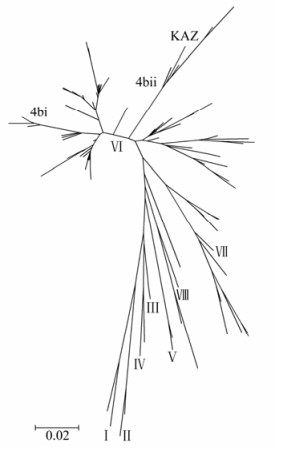
Characterization of Pigeon Paramyxoviruses (Newcastle disease virus) Isolated in Kazakhstan in 2005
2012, 27(2): 93 doi: 10.1007/s12250-012-3234-0
Received: 18 November 2011
Accepted: 27 February 2012
Isolates of Newcastle disease virus (NDV) from deceased wild and domestic pigeons in Kazakhstan were obtained from the Almaty region during 2005 and were genotypically analyzed by using reverse transcription polymerase chain reaction (RT-PCR) with primers specific to the viral fusion (F) protein gene. Part of the amplified F protein DNA product (nucleotide sequence 47–422) and the deduced amino acid sequences were compared phylogenetically with those from strains previously reported in other geographic regions. Phylogenetic analysis indicated that the Kazakhstanian pigeon paramyxovirus type 1 (PPMV-1) isolates belong to genotype VI or 4bii. To our knowledge, this is the first reported VI isolates that possess the sequences of 112 GKRQKR116* F117 within the F0 protein. The information is fundamental to improving the efficiency of control strategies and vaccine development for NDV.
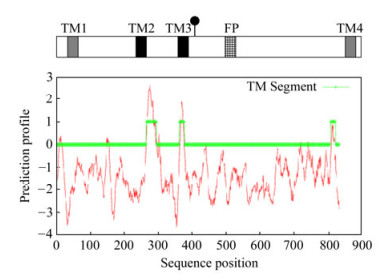
Surface Display of Rice Stripe Virus NSvc2 and Analysis of Its Membrane Fusion Activity
2012, 27(2): 100 doi: 10.1007/s12250-012-3237-x
Received: 19 December 2011
Accepted: 08 February 2012
Rice stripe virus (RSV) infects rice and is transmitted in a propagative manner by the small brown planthopper. How RSV enters an insect cell to initiate the infection cycle is poorly understood. Sequence analysis revealed that the RSV NSvc2 protein was similar to the membrane glycoproteins of several members in the family Bunyaviridae and might induce cell membrane fusion. To conveniently study the membrane fusion activity of NSvc2, we constructed cell surface display vectors for expressing Nsvc2 on the insect cell surface as the membrane glycoproteins of the enveloped viruses. Our results showed that NSvc2 was successfully expressed and displayed on the surface of insect Sf9 cells. When induced by low pH, the membrane fusion was not observed in the cells that expressed NSvc2. Additionally, the membrane fusion was also not detected when co-expressing Nsvc2 and the viral capsid protein on insect cell surface. Thus, RSV NSvc2 is probably different from the phlebovirus counterparts, which could suggest different functions. RSV might enter insect cells other than by fusion with plasma or endosome membrane.
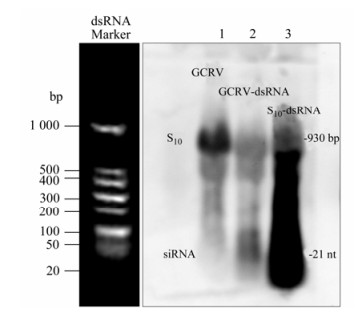
Suppression of RNA Interference Pathway in vitro by Grass Carp Reovirus
2012, 27(2): 109 doi: 10.1007/s12250-012-3230-4
Received: 15 November 2011
Accepted: 13 February 2012
The means of survival of genomic dsRNA of reoviruses from dsRNA-triggered and Dicer-initiated RNAi pathway remains to be defined. The present study aimed to investigate the effect of Grass carp reovirus (GCRV) replication on the RNAi pathway of grass carp kidney cells (CIK). The dsRNA-triggered RNAi pathway was demonstrated unimpaired in CIK cells through RNAi assay. GCRV-specific siRNA was generated in CIK cells transfected with purified GCRV genomic dsRNA in Northern blot analysis; while in GCRV-infected CIK cells, no GCRV-specific siRNA could be detected. Infection and transfection experiments further indicated that replication of GCRV correlated with the increased transcription level of the Dicer gene and functional inhibition of in vitro synthesized egfp-siRNA in silencing the EGFP reporter gene. These data demonstrated that although only the genomic dsRNA of GCRV was sensitive to the cellular RNAi pathway, unidentified RNAi suppressor protein(s) might contribute to the survival of the viral genome and efficient viral replication.
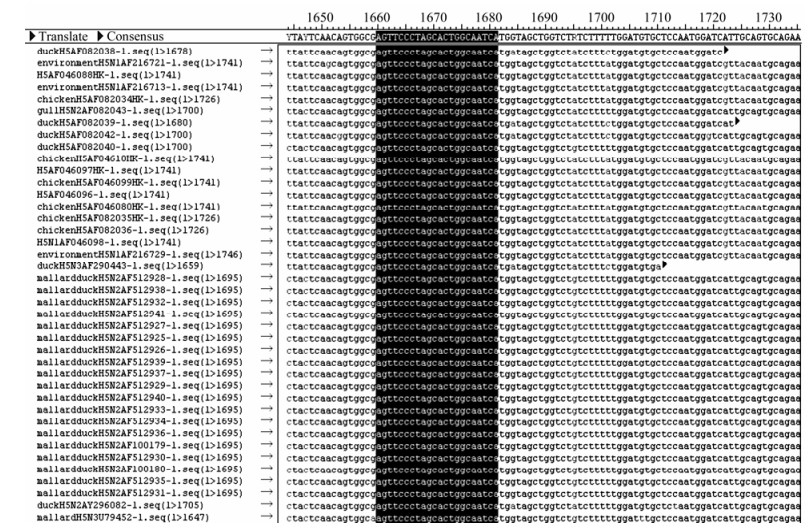
Subtyping Animal Influenza Virus with General Multiplex RT-PCR and Liquichip High Throughput (GMPLex)
2012, 27(2): 120 doi: 10.1007/s12250-012-3232-2
Received: 14 November 2011
Accepted: 05 March 2012
This study developed a multiplex RT-PCR integrated with luminex technology to rapidly subtype simultaneously multiple influenza viruses. Primers and probes were designed to amplify NS and M genes of influenza A viruses HA gene of H1, H3, H5, H7, H9 subtypes, and NA gene of the N1 and N2 subtypes. Universal super primers were introduced to establish a multiplex RT-PCR (GM RT-PCR). It included three stages of RT-PCR amplification, and then the RT-PCR products were further tested by LiquiChip probe, combined to give an influenza virus (IV) rapid high throughput subtyping test, designated as GMPLex. The IV GMPLex rapid high throughput subtyping test presents the following features: high throughput, able to determine the subtypes of 9 target genes in H1, H3, H5, H7, H9, N1, and N2 subtypes of the influenza A virus at one time; rapid, completing the influenza subtyping within 6 hours; high specificity, ensured the specificity of the different subtypes by using two nested degenerate primers and one probe, no cross reaction occurring between the subtypes, no non-specific reactions with other pathogens and high sensitivity. When used separately to detect the product of single GM RT-PCR for single H5 or N1 gene, the GMPLex test showed a sensitivity of 10-5(= 280ELD50) forboth tests and the Luminex qualitative ratio results were 3.08 and 3.12, respectively. When used to detect the product of GM RT-PCR for H5N1 strain at the same time, both showed a sensitivity of 10-4(=2800 ELD50). The GMPLex rapid high throughput subtyping test can satisfy the needs of influenza rapid testing.
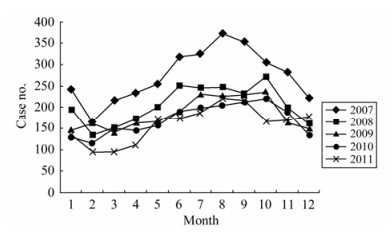
Analysis on Factors Related to Rabies Epidemic in China from 2007-2011
2012, 27(2): 132 doi: 10.1007/s12250-012-3244-y
Received: 10 February 2012
Accepted: 12 March 2012
To analyze features of the rabies epidemic in China between 2007 and 2011, identify factors influencing the epidemic and to provide a scientific basis for further control and prevention of rabies, Descriptive epidemiological methods and statistical analysis was used on data collected from the National Disease Reporting Information System between 2007 to 2011 and the National Active Surveillance System between 2007 and 2010. Our analysis shows that while the number of human rabies cases decreased year by year, the number of districts reporting cases did not show significant change. The situations in Guangdong, Guangxi, Guizhou and Hunan provinces clearly improved over the period but they remain provinces with high-incidence, and consequently influence the epidemic situation of surrounding provinces and possibly the whole country. Summer and autumn were high-incidence seasons. Farmers, students and pre-school children represent the high-risk populations, and rates of cases in farmers increased, those for students decreased, and pre-school children remained unchanged. Provinces with active surveillance programs reported a total of 2346 individual cases, of which 88.53% were associated with canines. Postexposure prophylaxis (PEP) of rabies cases was not significantly improved, whereas PEP in post-exposure population was good. In rural regions of China, canine density was reduced somewhat, and the immunization rate increased slightly. Finally we show that while the epidemic decreased 2007 to 2011 in China, cases continued to be diffused in certain regions. Lack of standardization of PEP on rabies cases was the main reason of morbidity. The high density and low immunization of dog in rural areas and the defective situation of PEP are still continuous occurrences in China and remain a cause for concern.







